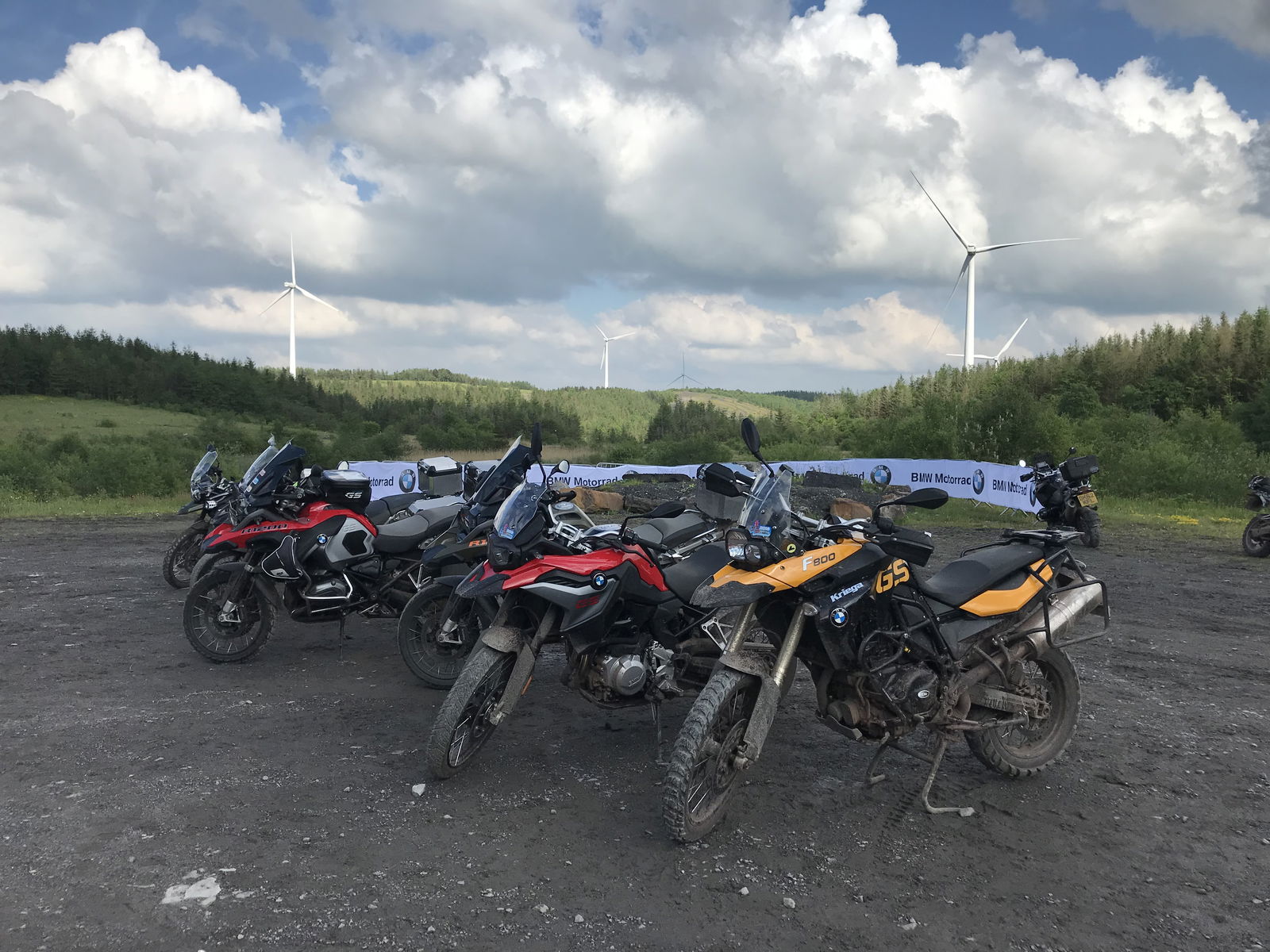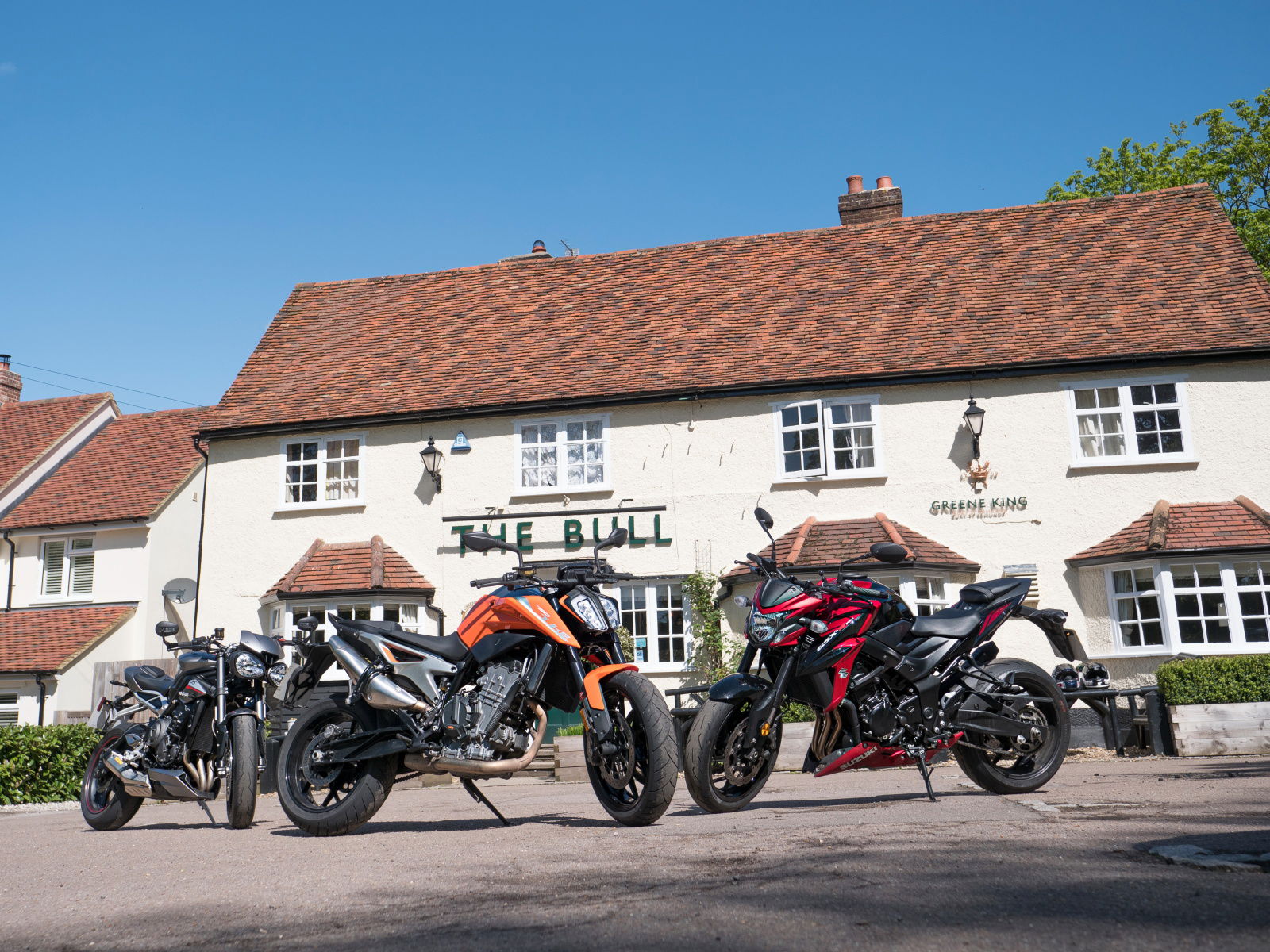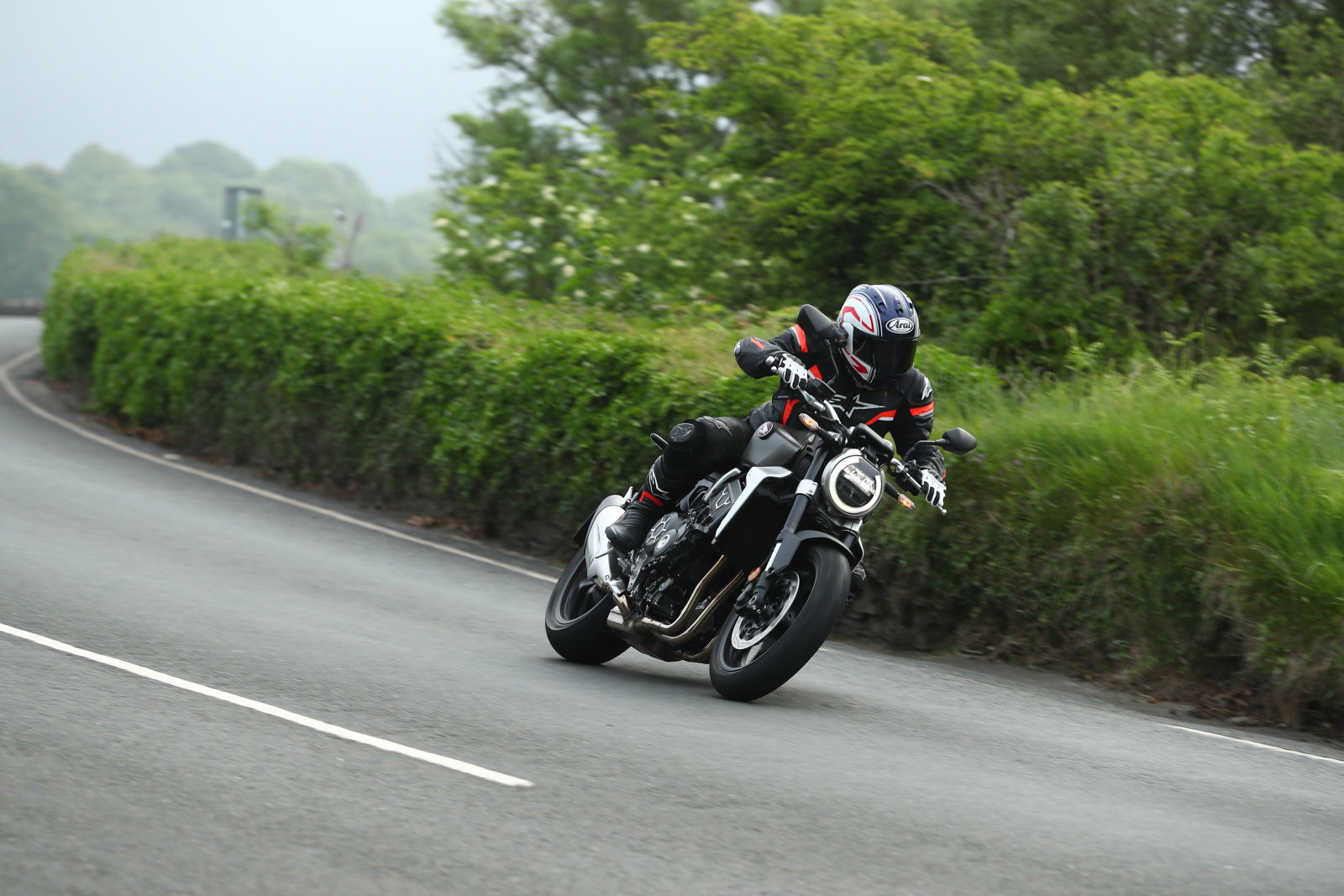Spankers BMW F850GS Sport UK first ride
After a brief ride on launch in Spain, I leapt at the chance to bag a UK exclusive first ride

WITH the host of exciting adventure concepts revealed at EICMA last year it was easy to overlook BMW’s F850GS. After all, it was just an updated version of what BMW already offered and nowhere near as exciting as Yamaha’s T7 Tenere World Raid Prototype, KTM’s 790 Adventure or Moto Guzzi’s V85.
But overlooking it was my mistake, as I briefly found out on the riding launch in Spain back in February. Rain very much stopped play, but despite only managing an hour in the saddle, I got the impression of a far more capable and refined machine than its predecessor, the F800GS. Coupled with its awesome style, which BMW describes as ‘dynamic and masculine’ (my inner feminist is outraged, again), I wondered whether this could be the true Goldilocks of adventure machines.
So when I was offered an exclusive chance to take the 850 on its debut UK road test at the GS Challenge last month, I jumped at it. The route comprised 100-odd scenic, twisting miles through the Brecon Beacons, taking in a handful of off-road routes along the way.
The bike felt familiar as I climbed aboard, but the seat was lower than I remembered, far shorter than its predecessor, however it suited my five feet and seven inches well, negating the need for the lower seat.
Before we could begin the ride though, I had to negotiate BMW’s new TFT colour dash. With the trip reset not immediately apparent, I called in the heavies. Even two BMW Motorrad staff and Off Road Skill’s best instructors struggled to find the option among the plethora of screens and options given. I was secretly glad it wasn’t just me...
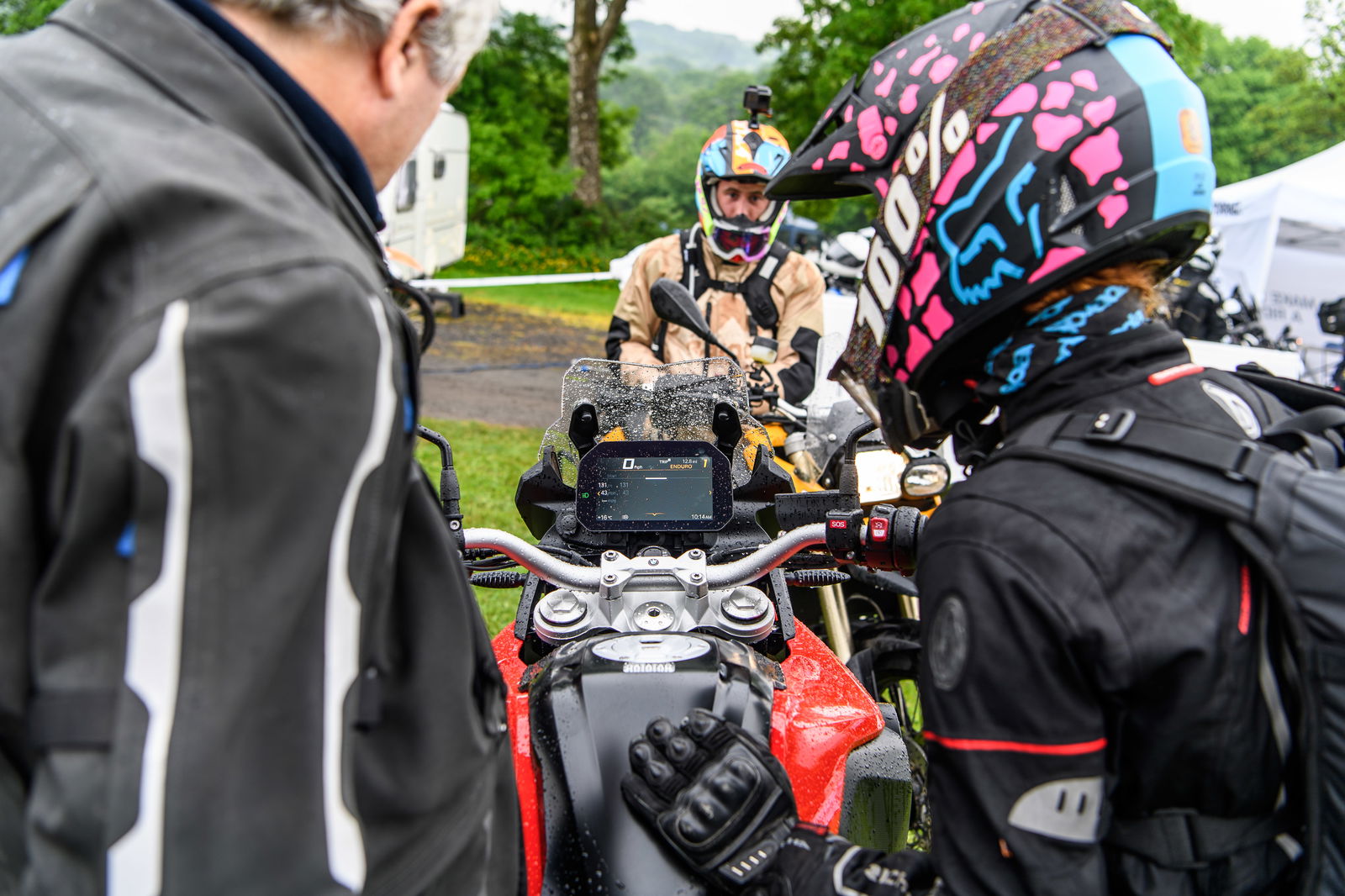
Trip reset and off we set, onto a wide, sweeping B-road. The bike and its Bridgestone A41s had just 13 miles on the clock and the roads were wet from the typical Welsh weather. However, only once on the entire road ride did the rear lose traction, stepping out slightly before the DTC (Dynamic Traction Control) caught it as I wound my way up a greasy, leaf-covered left-hander.
For the second time that morning I marvelled at the bike’s ergonomics. The seat was comfortable, the high bars and pegs well positioned, and the levers all within reach - I usually have to wind the clutch and/or brake in. That said, I noticed the clutch lever catching a little as I first engaged it - something I’d also registered on launch, and had attributed to the new anti-hop clutch. Snags aside, this system worked marvellously, reducing engine drag torque, during downshifts and making the clutch lever much lighter in general - perfect for riding two finger enduro-style as I found out later in the ride.
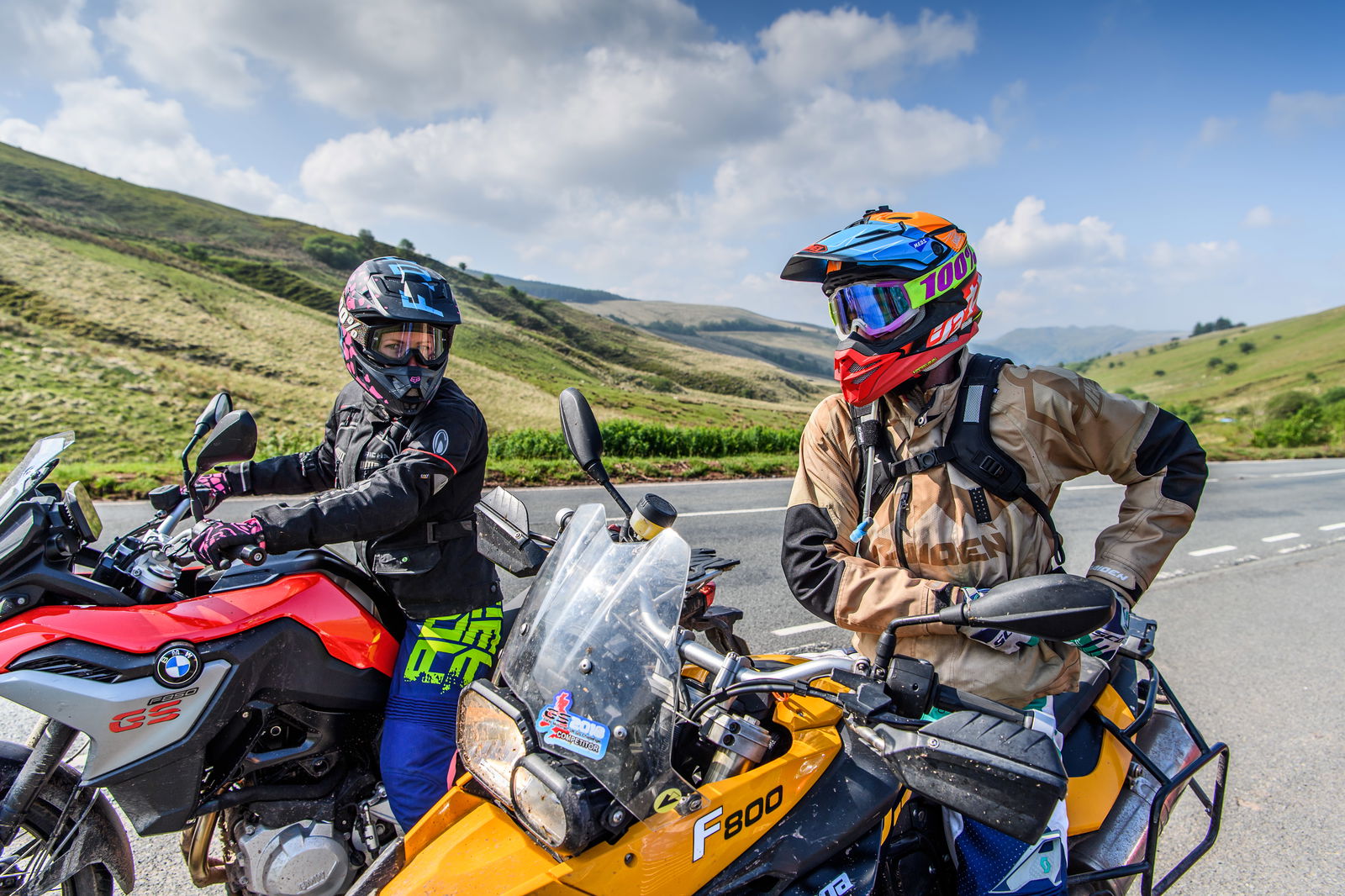
But before I go any further, let’s read the spec sheet. For the new F850GS, BMW has ditched its zero-degree offset, stroke of 360/360 designed-to-replicate-a-boxer 798cc parallel powerplant in favour of a new 853cc unit. The capacity increase comes from both a revised bore and stroke. And inside this beating heart of the bike, BMW has introduced a 90-degree offset crank, with a new firing order – every 270/450 degrees to be precise – which makes it feel, and behave a lot more like the parallel twin that it is. The German manufacturer has also dropped the innovative rocking-beam balance system used on the old 700/800 motor, in favour of a more conventional twin balance shaft setup. There's also a new dry sump lube system. Built by Chinese firm Loncin, the unit makes 95hp and 67.9lb-ft at 6,250rpm.
The chassis, meanwhile, has been uprated from a tubeless steel frame to a steel bridge type frame, which BMW claim improves rigidity, robustness and riding precision. No complaints here so far!
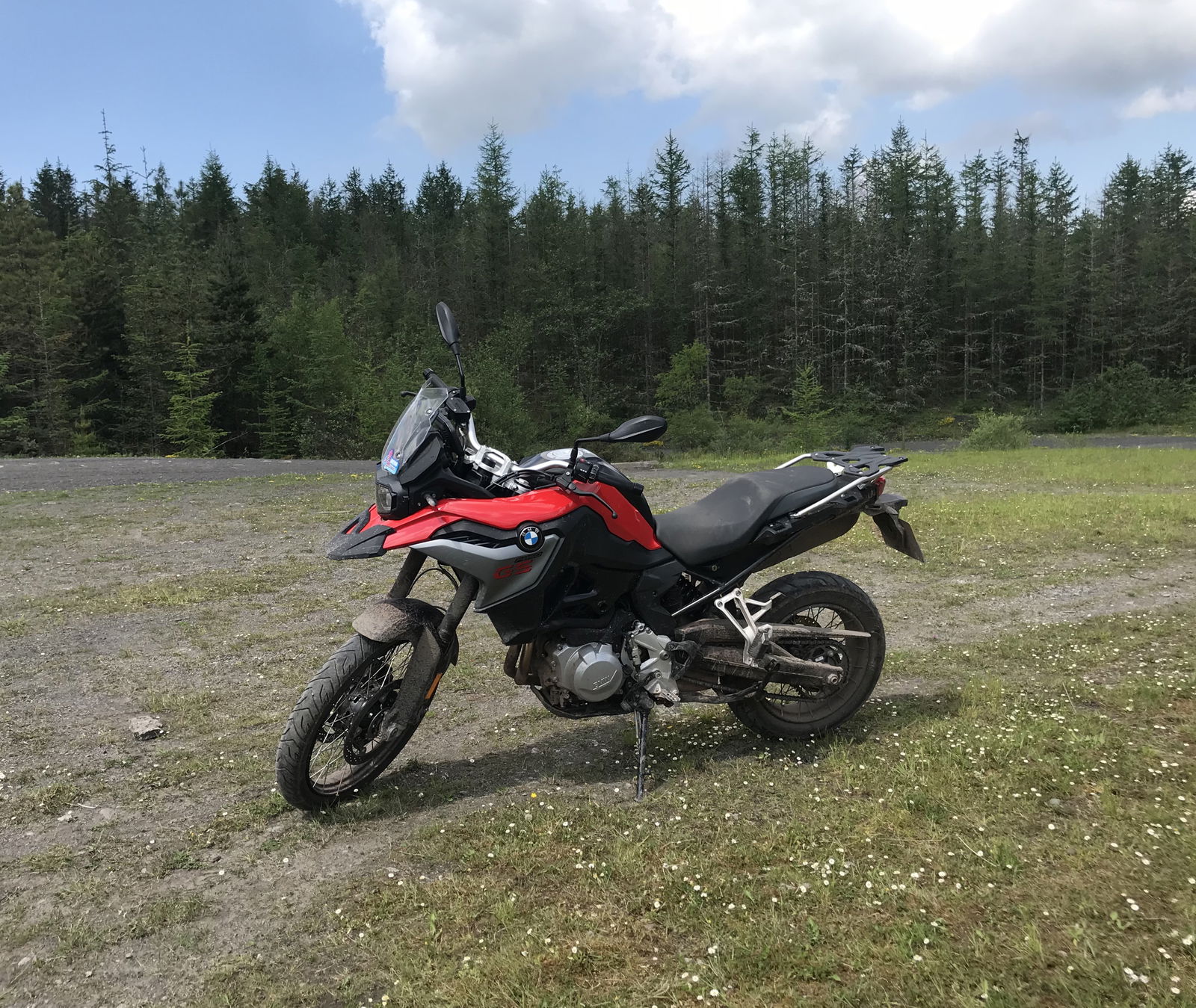
And the Germans also gave the gearbox some serious thought, which has resulted in revised ratios. First to third are shorter, giving for better low speed acceleration, while four to six are longer – seriously improving high speed cruising.
There’s a much more advanced suite of electronics than previous, with the standard £9,400 bikes coming with ABS, traction control, two riding modes ('rain' and 'road') and Brembo brakes. However, opt for the Sport model and for £1,250 more you get cornering ABS and traction control, BMW’s gear shift assistant pro, heated grips, LEDs and three more riding modes of Dynamic, Enduro and Enduro Pro.
There’s tons more optional extras too, including BMW’s TFT dash with Connectivity, cruise control and Intelligent Emergency call. Despite how popular this kit has proved on BMW’s larger bikes, I’m still not a fan, and find the TFT dash a bit of a nightmare to navigate. I guess you’d get used to it, but it’s a bit confusing initially
So, does it live up to the press release claims? Put bluntly, yes. I’m a huge fan of the original F800GS, with its grunty power and tall, dirtbike-like stance, and was worried that by making the F850 more refined, it would lose some of its character.
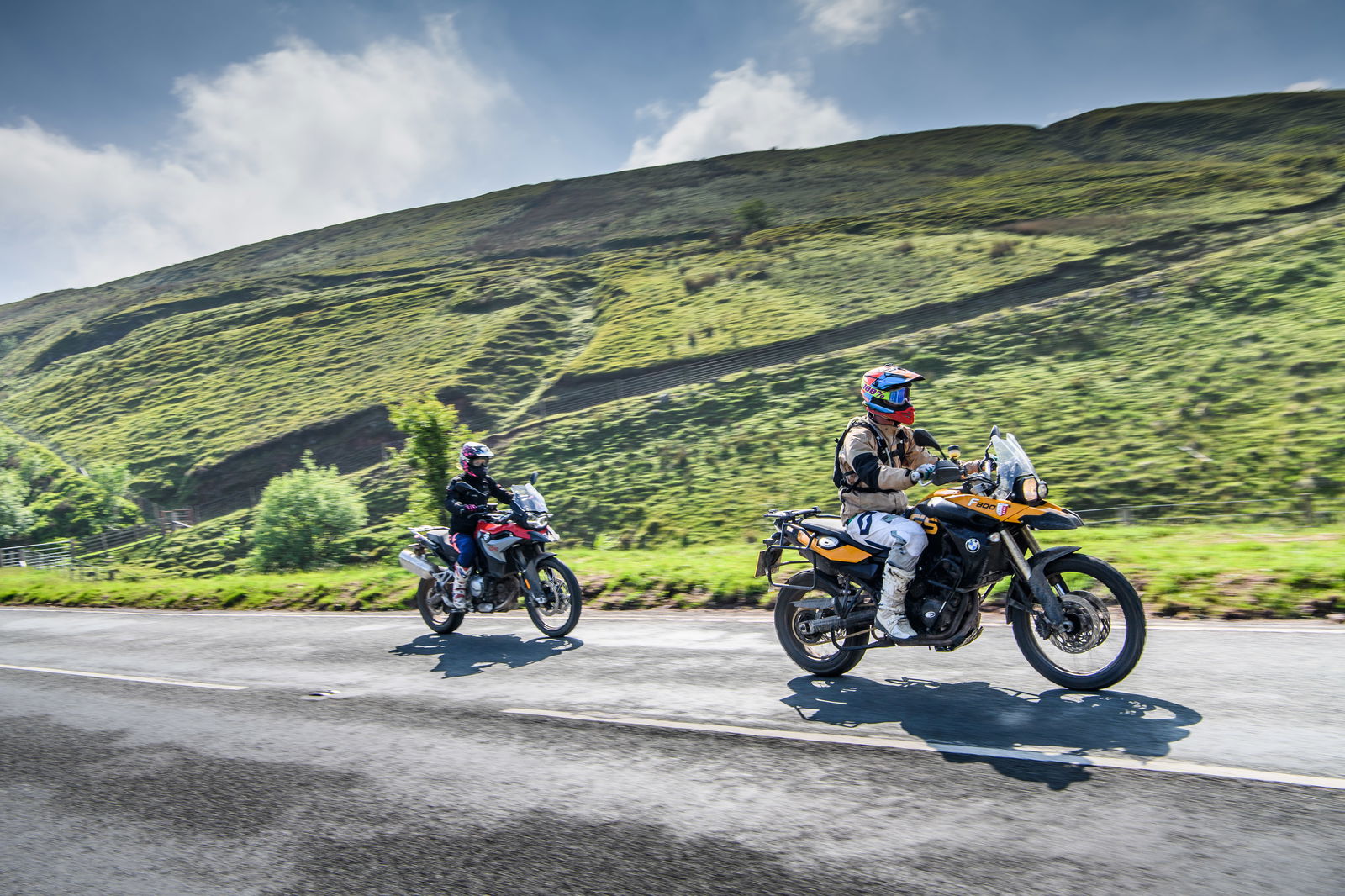
Luckily, that’s far from the case, and this new engine takes the middleweight GS to new heights of refinement. There’s so much more power available – the 850 now has a power to weight ratio not far off the R1200GS – which is delivered in a smoother manner, thanks to those balancer shafts. The 850 is more powerful, faster and sounds a hell of a lot better than its predecessor, thanks to this free-revving unit.
‘Dynamic’ mode proved to be the best option on the Tarmac, with ‘Rain’ and ‘Road’ feeling a tad on the springy side. On the launch, larger riders set the preload to rider plus luggage, but the standard rider setting suits my 56kg spot on. Gearshift Assistant Pro and cruise control are creature comforts that you probably don’t really need on a middleweight adventure bike, but are nice nonetheless.
I’ve got to admit I wasn’t that impressed by the rear brake - something I don’t remember from the launch. Luckily the dual discs with two-piston floating calipers up front more than make up for it.
My GS Challenge riding buddy was aboard an original F800 GS, and thanks to the nature of the winding Welsh roads we were often slowing right down for tight bends or sheep. Every time we accelerated afterwards, Leo’s bike would leap forwards, the rear suspension squatting under the power. I had no such issues, with the responsive 850 picking up speed quickly yet smoothly - thanks in part also to the new ride-by-wire throttle. The revised suspension geometry (with optional electronic adjustment) and redistributed weight - the underseat tank of the F800GS has been moved to a more conventional position to improve the bike’s centre of gravity – meant the new 850 far was less prone to bogging down. In fact, the F850 felt far more stable and balanced in general, both on fast roads and slow. As I mentioned earlier, it retains the nimble, manoeuvrable nature of its predecessor but handling has improved tenfold, and with more weight and revised inverted forks up front, that 21” front wheel feels far more connected to the road. The bike turns in easier and feels much more stable than the flighty original. Equally, off-road, the standing triangle is spot on, and the GS feels just as light and chuckable as it does on the Tarmac.
The new gearbox worked wonders, too, with the shorter first gears allowing the bike to get up to speed quicker on road, and providing access to the much needed low-down torque off-road - peak of 67.9ft lbs is reached at 6,250rpm and there’s plenty available between 2,500 and 3,500rpm. That said, the GS still felt a little breathless below that, especially when compared to Triumph’s new Tiger 800.
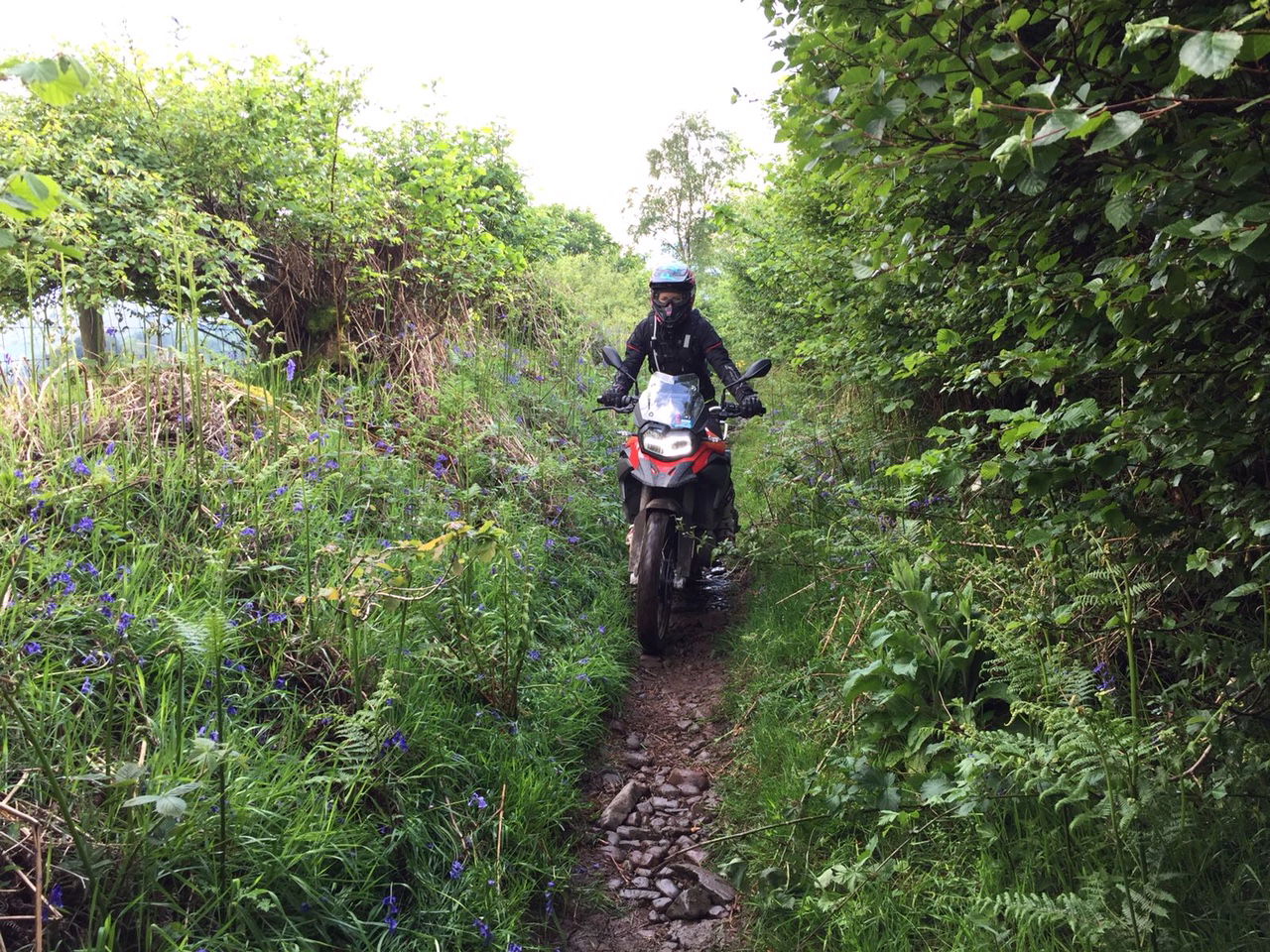
The GS Challenge route featured three off-road sections: ‘easy’, ‘hard’ and ‘very hard’. The easy option was a Forestry firetrack, and neither the 850 nor its road-biased Bridgestones had any issues. The standing triangle felt as natural as I remembered and weighting the pegs was a doddle, with the bike moving easily beneath me. Enduro mode offered the perfect compromise of a gentle engine response, softer rear suspension for optimum traction, with limited traction control and ABS intervention. Enduro Pro deactivates the rear ABS completely, allowing for some nice skids.
The hard route - a couple of miles of green lane through farmland and forest - began similarly. The first 300 metres was gravelly and dry, and the tubeless Bridgestone A41s had no issues there. As the track got muddier and ruttier, I switched to Enduro Pro and stopped to remove the rubber footpeg inserts. My boots weren’t the only thing that were slipping however, with the mud packed tyres struggling for grip in the bog. The limited traction control helped where it could, but rocks under the mud sent the tyres sliding left right and centre. The extreme off-road option began with a half metre drop off a boulder, which the suspension swallowed up admirably, followed by a steep narrow gully of rocks. Again the tyres slid from left to right, but the capable suspension and well-distributed weight kept it upright - for most of the time, that is.
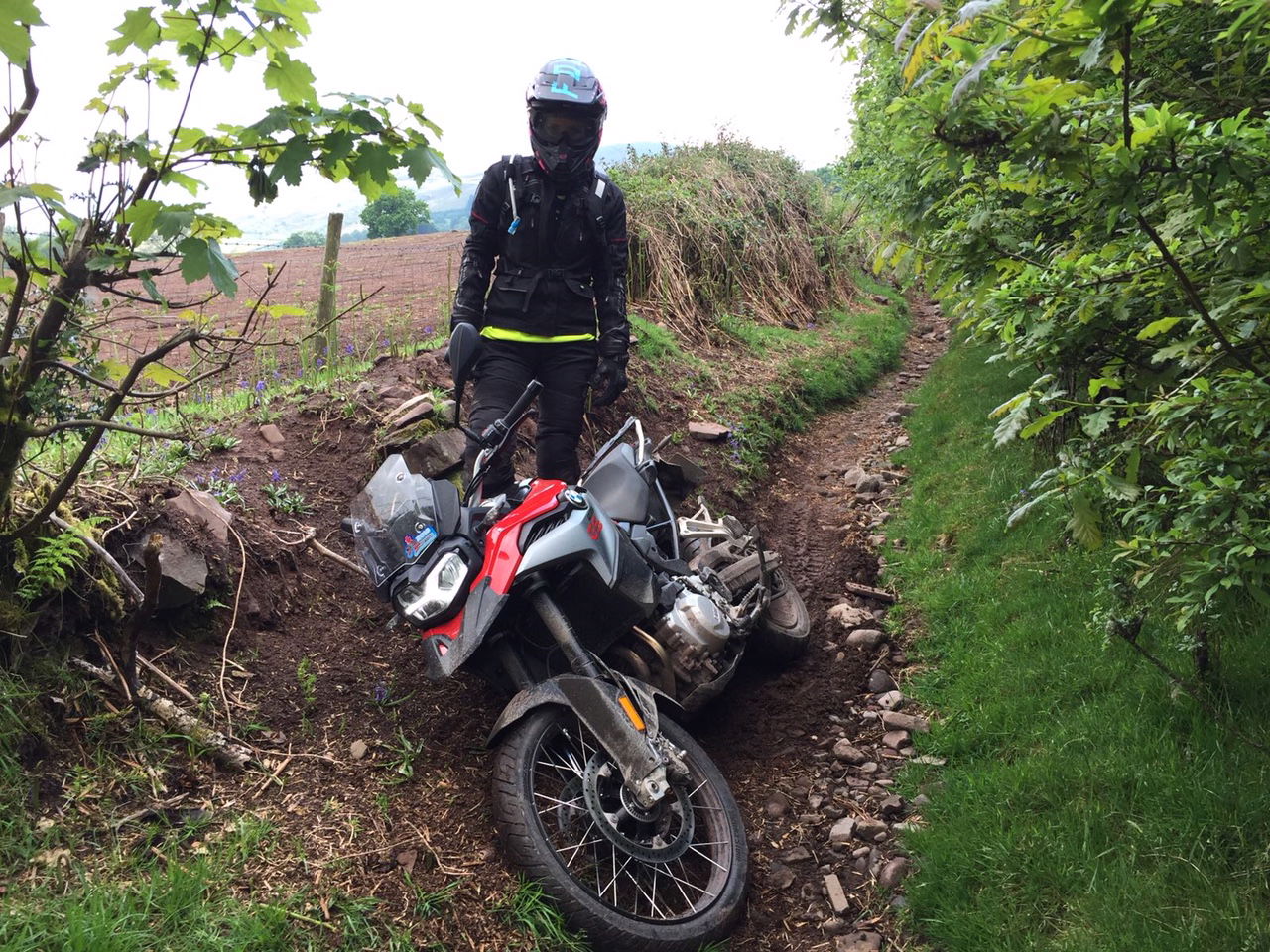
After a day and a half, and around 100 miles on the F850GS I was reluctant to return it to Off Road Skills. I had so much more to explore on the wonderful middleweight machine, including that confusing dash. Thankfully BMW has promised Visordown a long term F850GS, so you’ll soon be seeing more of its ‘masculine’ looks on the site. I’ve already started planning my adventures...
Specs:
Model tested: BMW F850GS
Price: From £9,400
Engine: 853cc parallel twin
Power: 95hp
Torque: 67.9lb-ft @ 6,250rpm
Kerb weight: 229kg
Seat height: 815mm – 875mm
